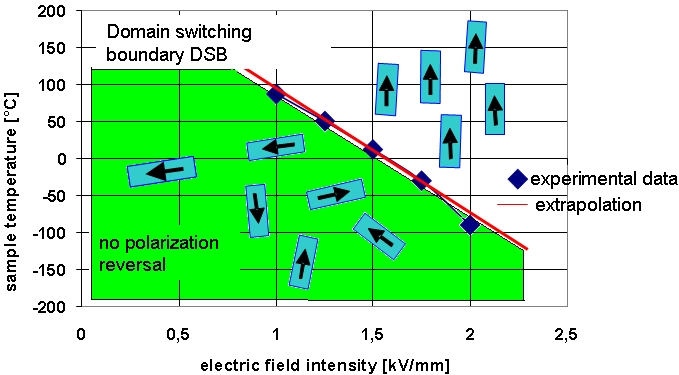Subproject C3
Study of poling technology as part of series fabrication of smart structures
Project Manager:
Dr. rer. nat. Andreas SchöneckerFraunhofer-Institut für Keramische Technologien und Systeme IKTS
Winterbergstr. 28
01277 Dresden
Telephone: +49-(0)351/2553-508
Telefax: +49-(0)351/2553-136
E-Mail: Andreas.Schoenecker@ikts.fraunhofer.de
Objectives
Specific experiments will be performed to reconstruct the load conditions, which typically occur during processing and application. Generalized material laws are derived from experimental date base.
Modelling of polarisation, strain and stress fields is based on the FE-package CFS++ developed at the University of Erlangen. As new approach, this will be done time resolved and in spatial resolution. Acceptable calculation speeds require improvements of used numerical procedures.
Proposed methodological improvements are expected to allow for the simulation of composite structures, the design of components (block force, risks of degradation and failure accumulation) the design of production steps (polarisation as part of technology).
Results of first funding phase

Figure 1: The figure shows the domain switching boundary DSB, which separates parameter areas
of temperature and electric field strength with polarization capability from parameter areas
with no polarization capability.
Task of second funding phase
The following tasks will be investigated in the second funding phase:| • Experimental investigation of polarization and displacement under combined thermal, electrical and mechanical load • Model development and FE - simulation of polarization and displacement of integrated piezoelectric ceramic in composite materials • Development of design criteria and manufacturing recommendations • Development of polarization technology applicable for series production |




